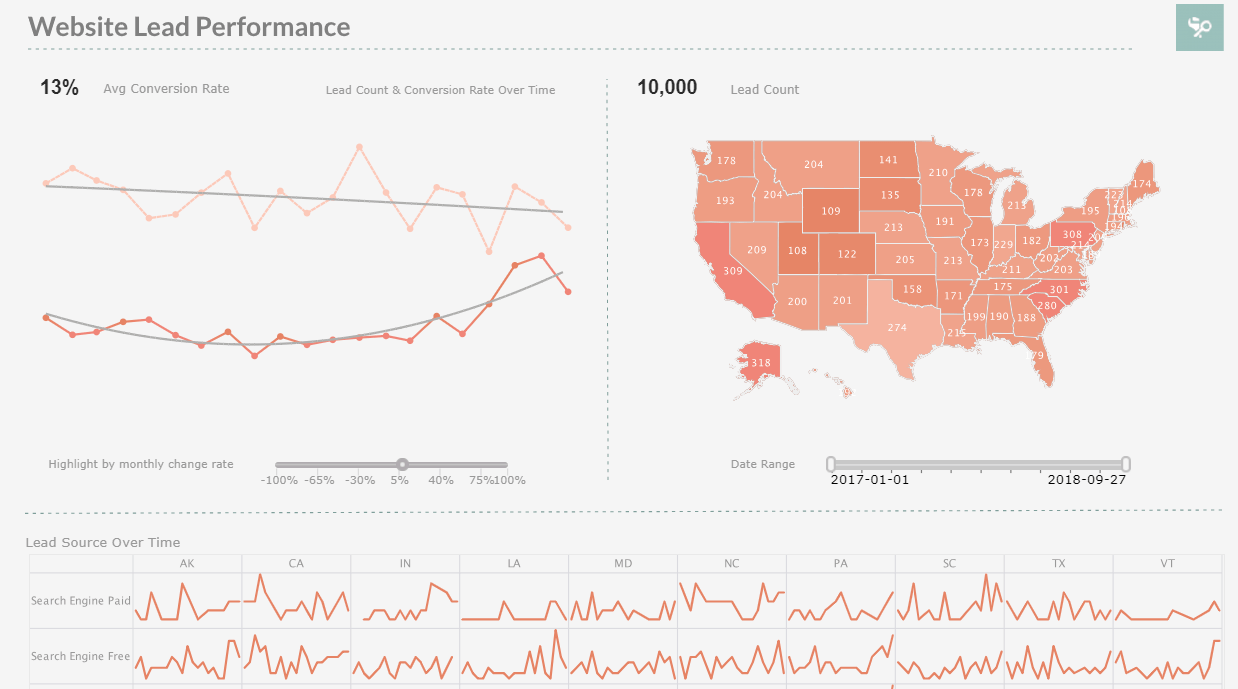How Marketers Use Dashboards
Many marketing specialists use dashboards as they help visualize data for easier comprehension and usage.
First of all, it's necessary to define a marketing dashboard. This reporting instrument provides key performance indicators (KPIs) and other metrics in the shape of charts, graphs, and other visual elements. These tools make it possible to evaluate marketing performance objectively. The main question to answer with a marketing dashboard is, "Where are we?" It is possible to correct tasks, set up new goals, and change the schedule using this tool.
The Benefits of Marketing Dashboards
By using a marketing dashboard, you can, for instance, see how far you are in the terms of content. Does your team have enough time to produce and publish the required amount of content? Perhaps, except for your in-house writers and editors, you will need to hire freelance experts from some paper writing service. Another example is whether you have enough social media accounts under your control and how active they are.
| #1 Ranking: Read how InetSoft was rated #1 for user adoption in G2's user survey-based index | Read More |
Marketing KPIs
A marketing dashboard displays plenty of indicators and metrics that a marketing specialist should know and interpret. Once you have a look at the statuses, you will get an idea of where your project is. The tool allows spotting and fixing issues at the early stages. The idea is to analyze the reports in the shape of heat maps, scatter plots, and other visuals to decide how to improve the current activities and results. Here are some of the metrics provided by most marketing dashboards:
- Lead-to-cashflow
- Prospects
- Profitability
- Conversion rates
- Geodata
- Source tracking (e.g., organic search)
How Does a Marketer at a Fashion Brand Use Dashboards?
A marketer at a fashion brand can leverage dashboards as powerful tools to track, analyze, and optimize various aspects of their marketing efforts. Dashboards provide a visual representation of key performance indicators (KPIs), metrics, and trends, enabling marketers to make data-driven decisions and drive the success of their campaigns. Here's how a marketer at a fashion brand can use dashboards effectively:
-
Campaign Performance Monitoring: Dashboards can aggregate data from various marketing channels such as social media, email marketing, paid advertising, and website analytics. Marketers can track key metrics such as impressions, clicks, conversions, and revenue generated from each campaign in real-time. By visualizing campaign performance metrics on a dashboard, marketers can quickly identify which campaigns are driving the most engagement, sales, and ROI. They can also track the performance of specific marketing channels and campaigns over time, allowing for continuous optimization and refinement of marketing strategies.
-
Audience Segmentation and Analysis: Dashboards can provide insights into the demographics, preferences, and behaviors of the fashion brand's target audience. Marketers can segment their audience based on factors such as age, gender, location, interests, and purchase history. By visualizing audience data on a dashboard, marketers can identify trends, patterns, and opportunities to tailor their marketing messages and promotions to specific audience segments. This personalized approach can lead to higher engagement, conversion rates, and customer loyalty.
-
Inventory and Sales Monitoring: Dashboards can integrate data from inventory management systems and sales databases to provide real-time visibility into product availability, sales performance, and inventory levels. Marketers can track sales trends, monitor product performance, and identify which products are selling well and which ones are underperforming. By visualizing inventory and sales data on a dashboard, marketers can make informed decisions about inventory replenishment, pricing strategies, and promotional activities. They can also identify opportunities to cross-sell or upsell complementary products based on customer purchase behavior.



